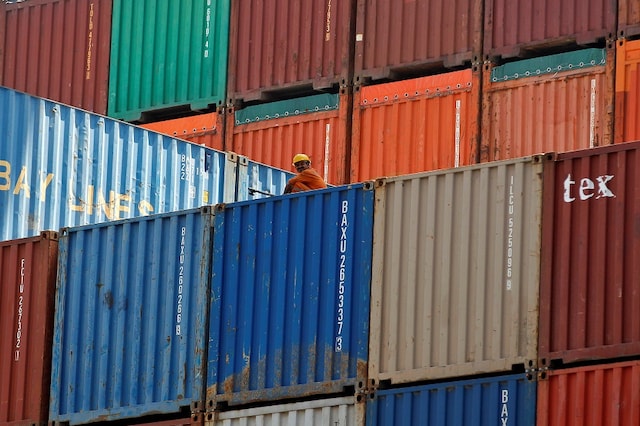India, Australia and Japan’s Supply Chain Pact to End China’s Trade Dominance Explained
Curated By: Stephen Manallack
Last Updated:
While Japan led the deal, in recent times India has had growing concerns about supply chain dependence on China combined with Chinese border stoush, while Australia is being hit by Chinese trade restrictions.

Tuesday, September 1, saw an important move by Japan bear fruit with India and Australia – the three are fast-tracking supply chain cooperation and have given their bureaucrats just a few months to work out the details.
While Japan led the deal, in recent times India has had growing concerns about supply chain dependence on China combined with Chinese border stoush, while Australia is being hit by Chinese trade restrictions. All three countries are very “China trade dependent". They also have a direct interest in a stable Indian Ocean and Pacific Ocean.
The Joint Ministerial Conference was held by video and involved Australia’s Minister for Trade, Tourism and Investment, Senator Simon Birmingham, India’s Minister of Commerce and Industry, Piyush Goyal, and Japan’s Minister of Economy, Trade and Industry, Kajiyama Hiroshi.
Q.What does Supply Chain Resilience mean?
In the context of international trade, supply chain resilience is an approach that helps a country to ensure that it has diversified its supply risk across a clutch of supplying nations instead of being dependent on just one or a few – in this case, dependent on China.
Q.Why is Japan taking the lead?
While Japan exported $135 billion worth of goods to China in 2019, it also imported $169 billion worth from the world’s second-largest economy, accounting for 24 per cent of its total imports, according to data from tradingeconomics.com. Electrical and electronic gear, and machinery, nuclear reactors and boilers were sectors that clocked up significant imports into Japan. So, if China stops production (as it did during Covid-19) then economic activity in Japan is heavily impacted.
As part of the country’s economic stimulus package, the Japanese government recently earmarked $2.2 billion to incentivise its companies to move their manufacturing out of China – much of it likely to go back to Japan.
Q.Why was Japan keen to have India in there?
Japan is the fourth-largest investor in India with cumulative foreign direct investments touching $33.5 billion in the 2000-2020 period accounting for 7.2 per cent of inflows in that period, according to quasi government agency India Invest.
Imports from Japan into India more than doubled over 12 years to $12.8 billion in FY19. Exports from India to the world’s third-largest economy stood at $4.9 billion that year, data from the agency showed.
Q.What motivated Australia?
Australia, Japan and India are already part of another informal grouping – the Quadrilateral Security Dialogue, or the Quad, which includes the U.S. China has been Australia’s largest trading partner and that it counts for 32.6 per cent of Australia’s exports, with iron ore, coal and gas dominating the products shipped to Asia’s largest economy. Education is the leading part of Australia’s services exports. But relations including trade ties between the two have been deteriorating for a while now – kind of a flow on from the US-China trade war.
Q.What does India want from it?
While the US recently became India’s biggest trading partner, close behind is China – the two economies are close – maybe too close for India’s liking. China’s share of imports into India in 2018 (considering the top 20 items supplied by China) stood at 14.5 per cent, according to an impact analysis by the Confederation of Indian Industry in February 2020. In areas such as Active Pharmaceutical Ingredients for medicines such as paracetamol, India is fully dependent on China. In electronics, China accounts for 45 per cent of India’s imports, the analysis showed.
Chinese supplies dominate segments of the Indian economy. Sectors that have been impacted by supply chain issues arising out of the pandemic include pharmaceuticals, automotive parts, electronics, shipping, chemicals and textiles.
The writer is a published author and blogger at Into India. He has led multiple trade missions to India and is a former President of the Australia India Business Council. Views are personal.
Location:
SRH vs LSG, IPL 2024 in Photos: Travis Head, Abhishek Sharma Wreak Havoc as SRH Clinch Historic 10-Wicket Win Over LSG
DC vs RR, IPL 2024 in Photos: All-Round Excellence From DC Helps Them Clinch Dominant 20-Run Win Over RR
Bajaj Pulsar NS400Z in Pics: See Design, Features, and More in Detail
Full List of T20 World Cup 2024 Squads
MI vs SRH, IPL 2024 in Photos: Fiery Unbeaten Century from Suryakumar Yadav Powers MI to Dominant 7-Wicket Win Over SRH
More Latest News
SRH vs LSG, IPL 2024 Highlights: Hyderabad Openers Close Out 166 Run Chase in 9.4 Overs
Kerala SSLC 10th Result 2024 Live Updates: Declared! 99.69% Students Pass; Direct Link to Scorecards
Meghalaya Board 12th Result 2024 LIVE: Declared! 85.24% Science, 80.26% Commerce Students Pass MBOSE HSSLC
WBCHSE West Bengal HS Result 2024 Live (OUT): 90% Pass WB 12th; Result Link Activated
DC vs RR, IPL 2024 Highlights: All-Round Bowling Brilliance Seals The Deal as DC Clinch 20-Run Win Over RR